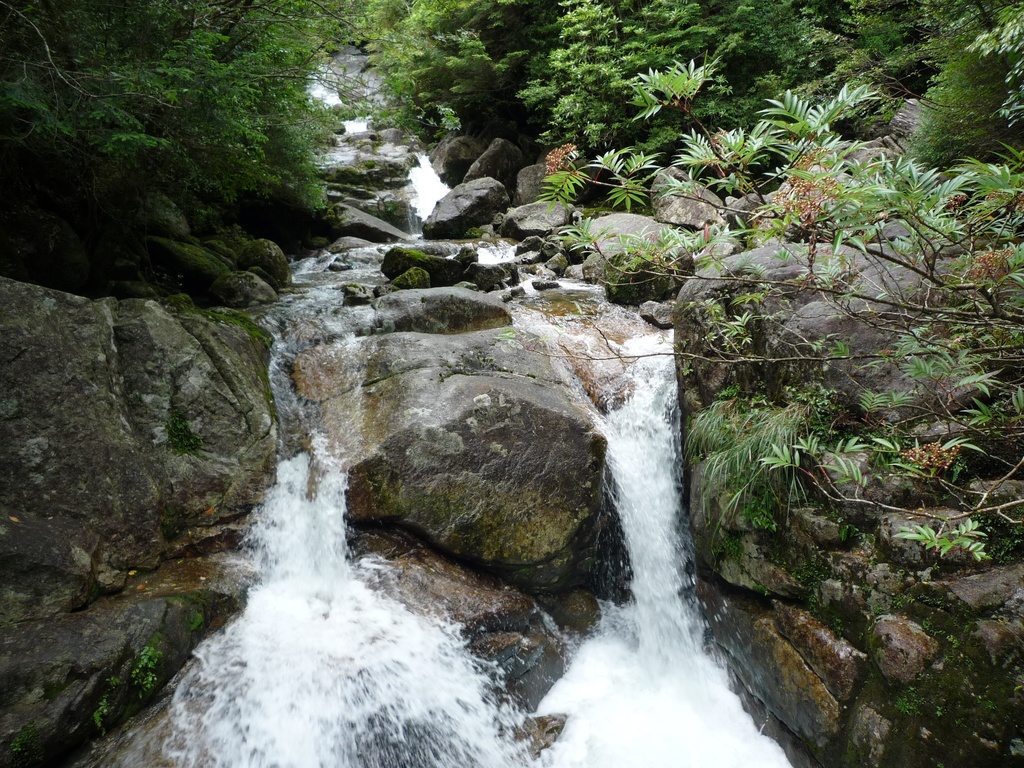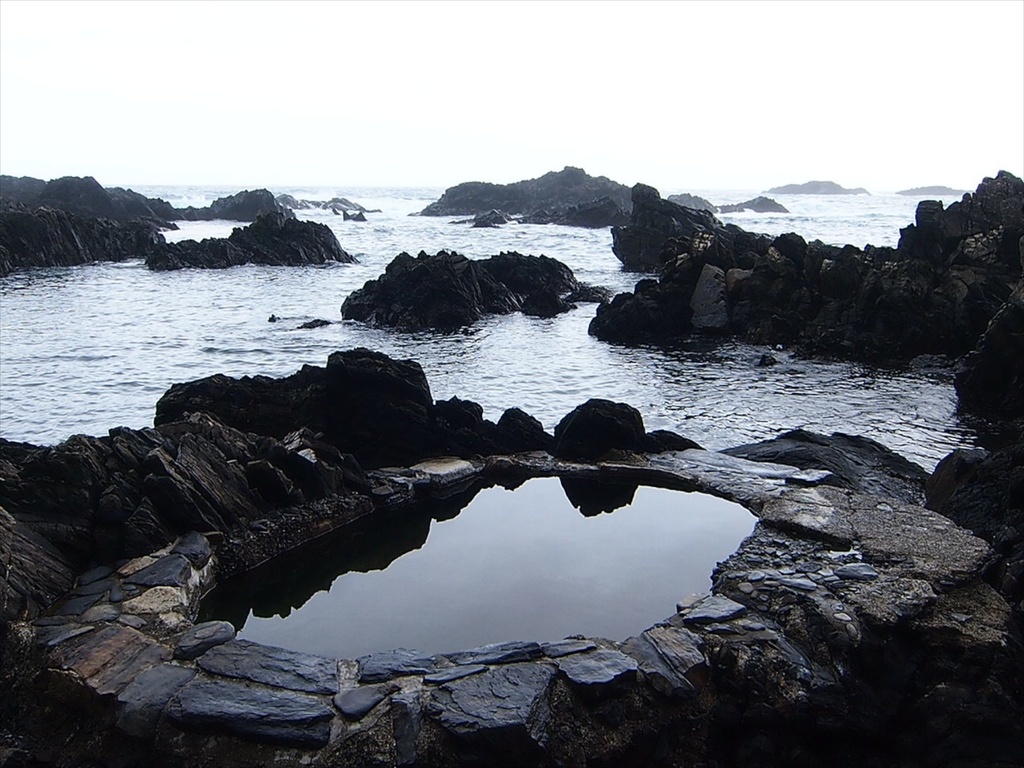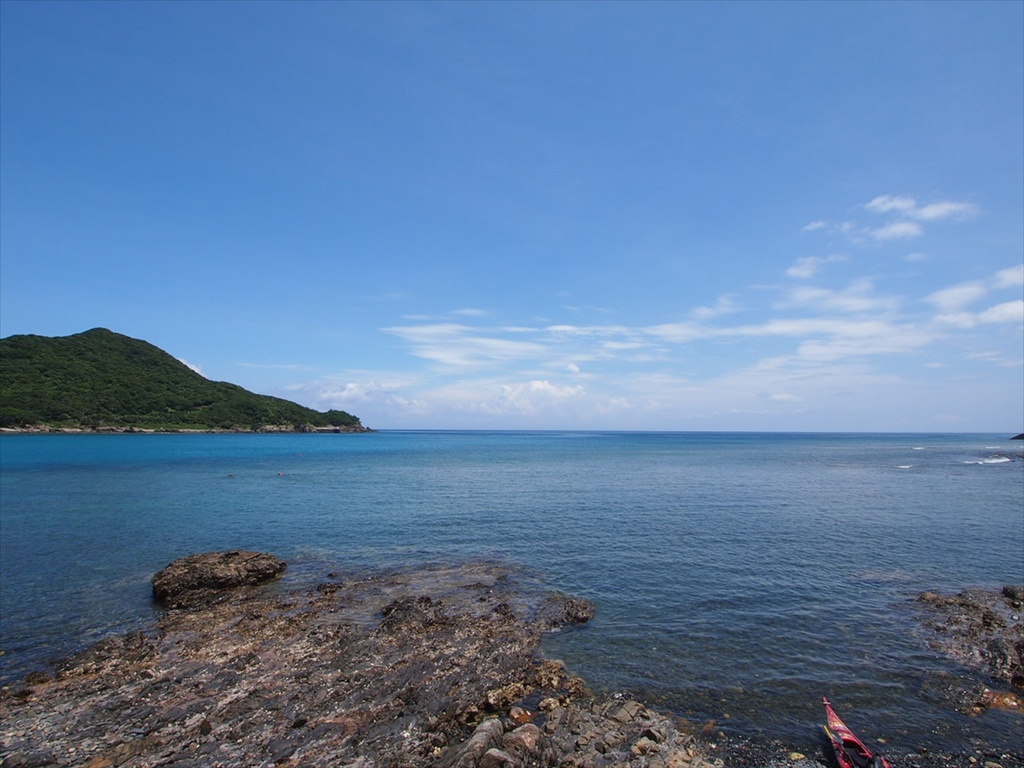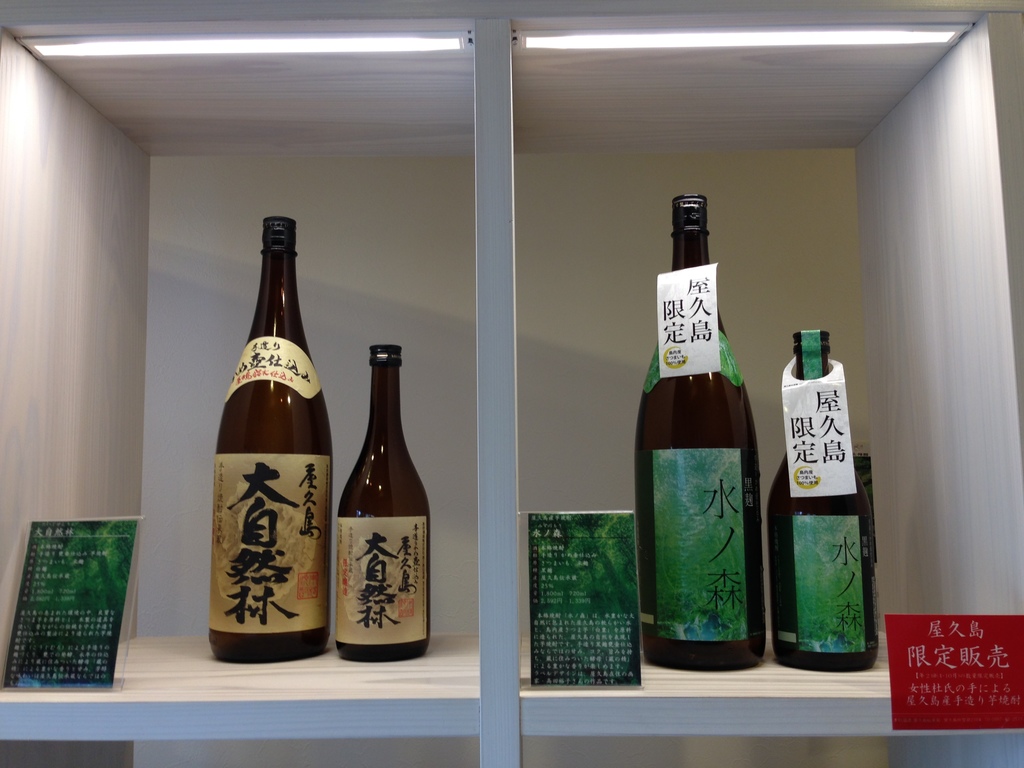Yakushima is widely known as the place to see giant old trees like the Jomonsugi and Daiousugi cedar trees. But if you have some more time and wonder what to do, why not take a trip under the theme of “water”?
Touring the "waterfalls" which heal with their ions

While Yakushima is a small island that can be circumnavigated in about 2-3 hours by car, it is said to have the biggest number of waterfalls in Japan.
Some are rare to see in the country, like the cascade “Toroki Falls” whose water falls directly into the sea, while others can be enjoyed with your entire body, such as Okonotaki Falls, included in the selection of Japan’s best 100 waterfalls, whose roaring sound and sprays can be felt at the rocky path that goes near its basin. You can also see Senpiro waterfall, named after the size of its giant wide bedrock. All of those waterfalls are outstanding.
Touring the hot springs which heal with the blessing of nature

Surprisingly, Yakushima island has several hot springs too. This is also thanks to the blessings of water. If you want to experience Yakushima’s wild nature, the gender mixed open-air bath Yudomari Onsen at the seashore is most recommended. The island’s mountains will rise behind you, while the blue sea will spread in front of you. Enjoying the pleasant breeze and waves in the tepid water while leisurely watching the rising sun or the sunset will undoubtedly evoke the healing power of the beautiful nature and its blessings.
Precautions when using Yudomari hot springs:
- There is an insufficient divider in the middle of the bathtub
- It is strictly prohibited to use swimsuits or underwear (but a towel is ok)
- There is a parking lot, toilets, a changing facility for women and a tea hut
- There might be waterweeds in the bathtub so it could be slippery
There are also other hot springs with different designs and shapes, such as Hirauchi-Kaichu Onsen, which emerges for about 2 hours only during a low tide, the locally managed and shared Onoaida Onsen, the private baths Yunoko-no-yu, and various hotel spa facilities. For more details, check the link to the official site of Yakushima’s Yudomari Onsen in the memo below.
Enjoying the "water" flowing from Yakushima and the beautiful "sea" shaped by Kuroshio current

People mainly associate Yakushima with forests, but it is actually a remote island. Let’s not forget the existence of the sea. The massive rainfall over Yakushima creates the rivers and waterfalls which flow into the sea. What impresses us most about the sea however is the extremely rich natural combination of fresh water and the influence of the nearby Kuroshio current with its warm and transparent flows. There are tropical fish in the coral reefs, while the sea tortoise lays its eggs on the shore. Especially at Nagata Maehama and Inakahama beaches one can find about half of all sea tortoise eggs in Japan.
On Yakushima island you can see not only the sea tortoise eggs, but explore the tide pools with their sea life of little shrimps and fish, or enjoy various marine sports such as diving, snorkeling and sea kayaks. For more details about the sea tortoise eggs, check the link to the official site of Yakushima Tortoise Hall in the memo below.
Tasting Yakushima through the exquisite shochu liquor made of the delicious "water"

“For good sake, you need good water”. It is believed that water is the most essential ingredient for producing distilled beverages. In Yakushima’s case, where the water is always fresh thanks to the constant rain, the sake can only be delicious. I recommend the brands “Mizu no mori” (water forest) and “Daishizenrin” (wild nature forest) made by the Honbo brewery. It is an entirely locally made shochu (distilled liquor) using Yakushima’s water and the sweet potatoes grown on the island. “Mizu no mori” is made with black liquor mold, while “Daishizenrin” uses white liquor mold, thus the two brands can be marketed as related. The sharp and exquisite fragrance of the sweet potato makes you want to drink the liquors almost like water. Be sure to taste and compare them. Especially “Mizu no mori” is a rare item sold only on the island seasonally (twice a year, in spring and autumn). If you find it, purchasing right away is the basic strategy. For more details, check the link to Yakushima’s brewery in the memo below.
Yakushima’s nature cannot exist without the "water"
The “water”, which plays an essential role in shaping the nature of Yakushima as a world natural heritage site, is a blessing for us too in its various forms. Usually when we travel we do not like rainy weather. However, the real charm in visiting Yakushima is hidden exactly in appreciating the rain there.
History
Get Trip101 in your inbox
Unsubscribe in one click. See our Privacy Policy for more information on how we use your data















Create an account to